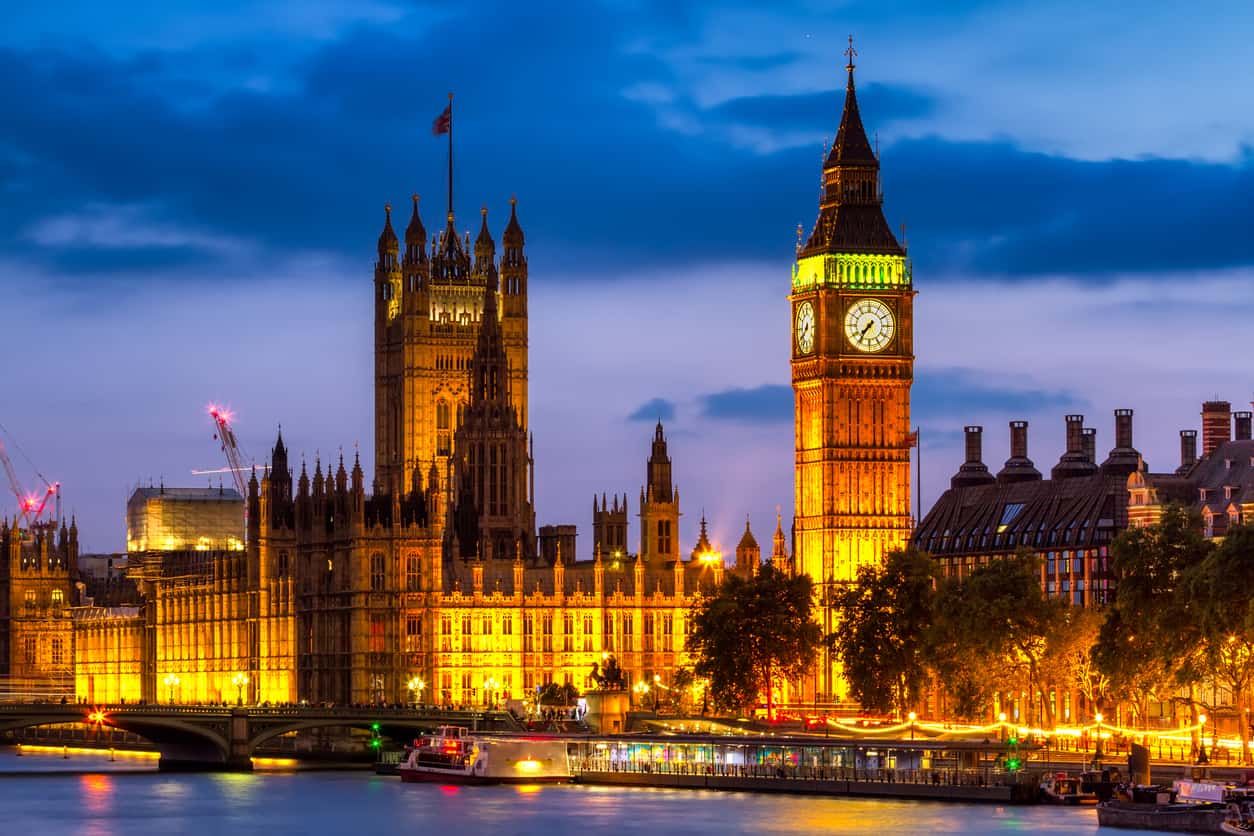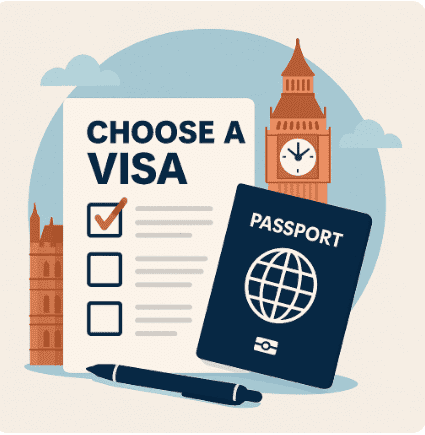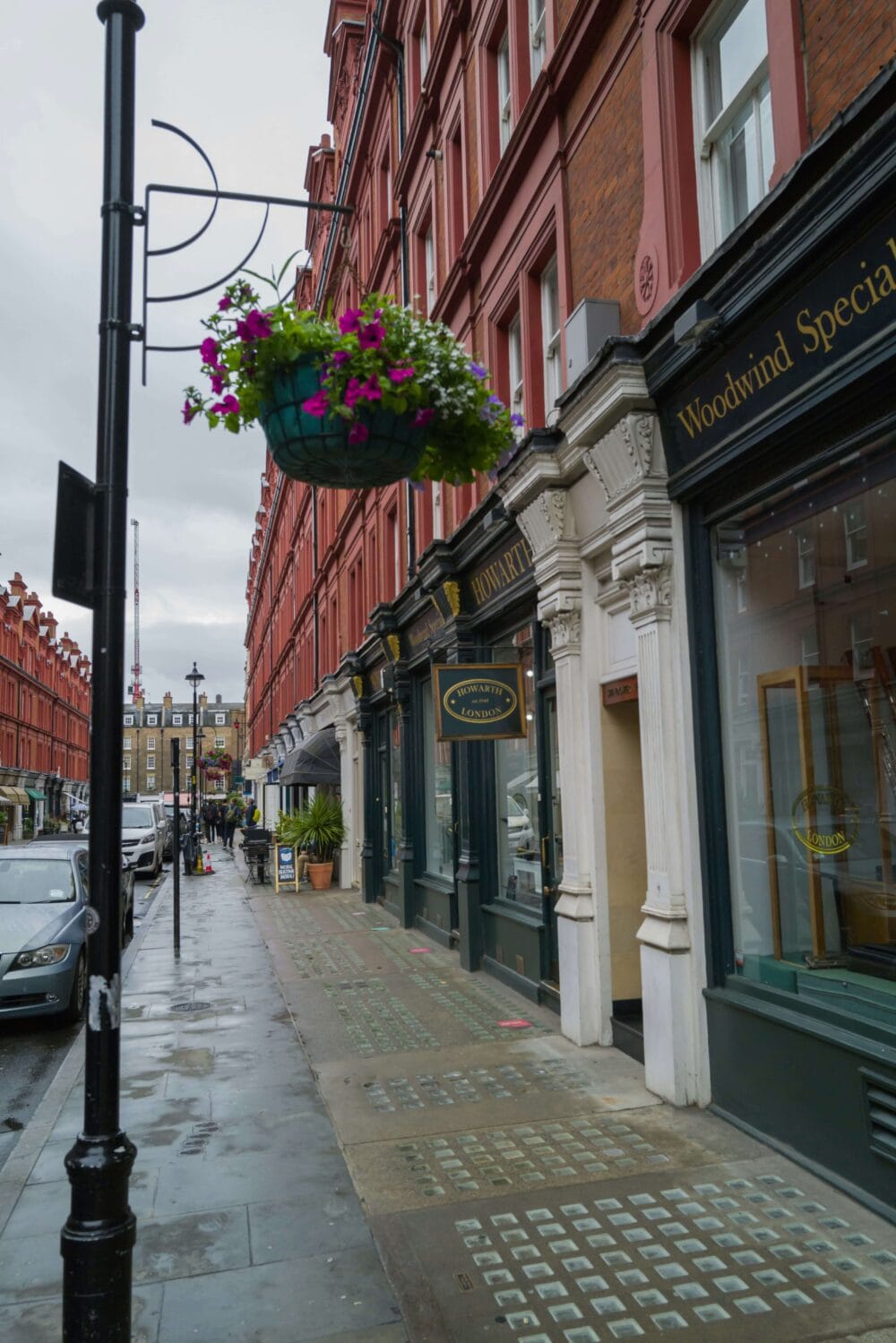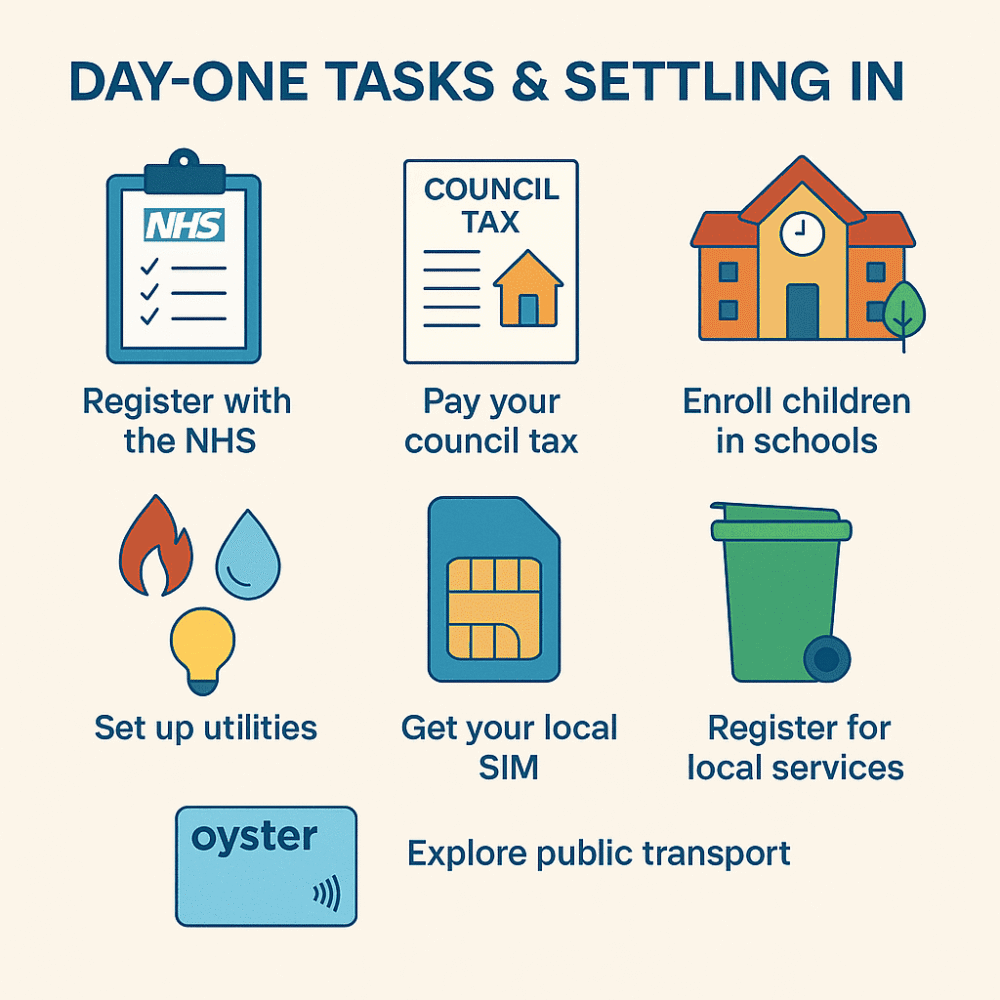Moving to London from the US

Moving to London from US: How to Start Your Life in the UK with Confidence
Thinking about moving to London from the US? You’re not alone. Whether it’s for career advancement, education, lifestyle change, or the dream of living in a global city, thousands of Americans relocate to London each year — and the trend continues to grow in 2025.
London offers US citizens a familiar language, world-class public transport, career opportunities in finance, tech, media, and an unmatched cultural scene. But moving to London from the US isn’t as simple as packing your bags. It involves selecting the right UK visa, planning your finances, understanding the cost of living, finding a home in the right London neighborhood, and preparing for life in a different legal and healthcare system.
This complete guide is designed for Americans who are seriously planning to move to London. We’ll answer your most important questions — What visa do I need to move to London from the US? How much does it cost to live in London? Where do US expats typically live in London? — and provide insider advice to help you transition smoothly.
By the end of this guide, you’ll know exactly how to relocate from the USA to London — with fewer surprises, fewer mistakes, and much more confidence.
Step-by-Step: How to Move to London from the US
If you’re planning to move to London from the USA, understanding the process step by step is essential. Relocating internationally isn’t just about buying a plane ticket — it’s about fulfilling visa requirements, budgeting accurately, shipping your belongings, and setting up your new life in the UK.
In this section, we’ll break down each major phase of your move. From choosing the right UK visa for Americans to finding a home in London and opening a UK bank account, you’ll get a clear, practical roadmap. Whether you’re moving for work, study, family, or retirement, this guide ensures you know what to do — and when — to make your relocation from the US to London successful.


1.Choose the Right Visa
Your visa path is the foundation of your move. Choosing the “wrong” one can cost you time, money, or options.
Here are the main visa routes for U.S. citizens in 2025:
- Skilled Worker Visa: If you have a job offer from a UK employer who is Home Office–approved, this is the most common route. You must have a valid Certificate of Sponsorship and meet salary thresholds. GOV.UK+1
- Global Talent / Innovator / Start‑Up Visas: For individuals with exceptional talent, innovative ideas, or entrepreneurial plans.
- Ancestry Visa: If you have a grandparent born in the UK (or the Channel Islands or Isle of Man).
- Family / Partner Visa: If your spouse, civil partner, or fiancé(e) is British or settled in the UK.
Student Visa: For full-time academic programs; may allow limited work hours.
Key changes in 2025:
- On 22 July 2025, the UK revised its list of roles eligible under the Skilled Worker route, removing many lower‑skilled jobs. House of Commons Library+1
- The salary threshold for many Skilled Worker positions is now £41,700 (or whatever the “going rate” is for that job), whichever is higher. GOV.UK+1
- Jobs below a bachelor’s degree level (RQF Level 6) are largely ineligible unless listed on the Temporary Shortage List (TSL). Centuro Global+1
Some transitional protections exist for those already in the UK under older rules. assets.publishing.service.gov.uk
2. Budgeting Your Move to London as an American
Moving internationally isn’t cheap. Underestimating costs is one of the most common mistakes.
Major Cost Categories
| Expense | Estimated Range / Notes |
| Visa & IHS (Immigration Health Surcharge) | £600–1,500+ depending on route |
| Shipping household goods | $4,000–$7,000+ (depends on volume, distance, mode) |
| Rent + deposit | 1–2 months’ rent up front, especially for prime zones |
| Flights & temporary housing | Varies based on timeline, class, location |
| Utilities, connection fees | Setup costs can be surprisingly steep |
| Buffer / emergency fund | Add ~10–20% for surprises |
Many Americans moving to London aim for US$10,000 to $15,000+ in savings before departure so they have a cushion during the high-expense early months.


3. Finding a Home When Moving to London from the US
For Americans relocating to London, securing housing is often the most stressful partof relocation—but also where your quality of life begins.
Strategies & Tactics
- Use high-quality property portals: Rightmove, Zoopla, OnTheMarket, OpenRent.
- Begin with short-term / furnished lets (serviced apartments or Airbnbs) until you get your bearings.
- Know how far you’re willing to commute: rent decreases dramatically in outer zones, but so does convenience.
- Be ready with references, previous landlord contacts, proof of income, and potentially a guarantor (especially if you don’t have UK credit history).
- Use local Facebook groups, relocation agents, and expat forums for leads and advice.
- Visit or do a reconnaissance if possible; nothing replaces experiencing the neighborhood at rush hour.
Neighborhoods in London by Lifestyle
- Young professionals / singles: Islington, Shoreditch, King’s Cross, South Bank
- Families / quiet life: Hampstead, Richmond, Chiswick, Ealing
- Value / up‑and‑coming: Stratford, Hackney, Barking & Dagenham
- Business / finance: Canary Wharf, Greenwich Peninsula
- Creative / alternative: Brixton, Peckham, Camberwell
When choosing, weigh cost vs transit time, school catchment, green space, noise, and local culture.




4. Shipping & Relocating Your Belongings from America to London
For Americans shipping belongings from the US to London, logistics play a big role in how seamless the move is
Shipping Methods
- Sea freight is cost-efficient for large volume and non-urgent items
- Air freight is tight and fast—but usually best for essentials
- Hybrid solutions: combine essentials via air and bulk via sea
Customs & Regulations
- Choose movers familiar with UK import rules
- Be aware of VAT (Value Added Tax) and possible duty on certain items
- Some household goods may be eligible for relief if you’ve lived abroad for some time
Practical Advice
- Create an inventory and clearly label boxes
- Take photos (or video) of condition before packing
- Insure your shipment
- Build buffer time in case of customs delays
Transit times typically range from 4 to 8 weeks (sea) or 5 to 10 days (air).
5. Financial Setup & Money Management for Americans in London
Once you arrive in London as a US expat, your financial systems must flow.
- Open a UK bank account: meeting the document requirements can be a hurdle—expect to provide your visa, proof of address, and ID.
- Use fintech / multi-currency platforms (Wise, Revolut, Monzo) to ease U.S.–UK transfers.
- Keep your U.S. accounts open—use them for fallback and continuity.
- U.S. citizens must comply with FBAR / FATCA reporting for foreign accounts.
Plan large fund transfers during favorable exchange rates and compare fees.




6. Day-One Tasks for US Citizens Moving to London
Here’s what US citizens should do when they first land in London:
- Register with the NHS / choose a GP (after you pay IHS)
- Pay your council tax for your local area
- Enroll children in schools, or find nurseries
- Set up utilities: gas, water, electricity, internet, phone
- Get your local SIM / mobile plan
- Register for local services (bin collection, library, etc.)
Explore public transport (Oyster card, contactless payments)
Detailed Costs & Cost of Living
How Much Does It Cost to Move to London?
When you add all the moving parts—visa, shipping, deposit, initial rent, flights—you’re often looking at several thousand dollars in setup costs before even paying monthly bills.
Cost of Living: London vs Other Cities
For Americans moving to London, the city remains one of the most expensive globally. A household of four can expect to spend US$5,069 (~£3,752) monthly excluding rent. Numbeo
For a single person, living expenses excluding rent average US$1,443 (~£1,068). Numbeo
According to Essential Living, a solo person’s monthly cost including rent, utilities, food, and transport typically falls between £3,000 and £3,500 in central areas. essentialliving.co.uk
In 2025, London ranked #15 on the global cost-of-living index. Numbeo
Red more about cost of living in London
Rent Patterns & Housing Costs
- A one-bedroom apartment in central London often rents for £1,750–£3,000 per month. Expatica
- Outside the center, prices drop—maybe £1,300–£1,800, but tradeoffs include longer commutes.
- Larger homes (3+ bedrooms) in prime zones may fetch £3,500–£6,500. Expatica+1
Inflation & Price Pressures
The ONS reports that inflation (CPI) rose ~3.8% year-on-year in 2025, with housing, transport, and services pushing the increase. ons.gov.uk+1
Rent pressure is high: 26% of Londoners reported difficulty paying rent in early 2025—up from 21% in 2022. data.london.gov.uk
London vs New York
A comparative study suggests NYC living may cost ~20% more than London. The cost of living band for London is estimated at £1,620–£2,610 monthly, whereas NYC ranges ~£1,942–£4,302 after conversions. en.uhomes.com
Culture, Work & Lifestyle As a U.S. Expat in London
Adapting to British Culture
Americans moving to London will find many familiar things—English language, pop culture, European influence—but also learn new norms:
- Vocabulary shifts: expect “flat,” “boot,” “loo,” “cheers.”
- Politeness & understatement: Brits are often indirect in requests.
- Queuing culture: lines are taken seriously.
- Tipping norms: ~10–12% or service included; not as generous as U.S. norms.
- Humor & irony: British wit is dry and subtle.
- Walking & public transit: Londoners walk a lot; cars are less necessary in many zones.
Expect a learning curve in tone, pace, and social norms.
Working & Career in London
Finding the right job and employer can make or break your move.
Key Trends & Sectors
- High demand exists in tech, finance, life sciences, media, consulting
- Many U.S.-based multinationals have London branches and sponsor visas
- Sectors like health/social care used to sponsor more broadly—but new rules curtail that. House of Commons Library
Visa Sponsorship & Eligibility
- Employers must hold a sponsor licence to bring you in under a Skilled Worker route.
- New rules in 2025 restrict which occupations are eligible and require higher skills thresholds. Centuro Global+2ein.org.uk+2
- Applicants must also satisfy minimum salary rules—£41,700 or the occupation’s going rate. GOV.UK+1
- Older workers already under previous provisions may retain transitional rights. assets.publishing.service.gov.uk
How to Position Yourself
- Tailor your CV/resume to British norms (concise, achievement‑oriented)
- Network via industry events in London, LinkedIn UK, local meetups
Consider internal transfers if your current U.S. employer has UK operations


Family, Education & Special Cases
Schools, Childcare & Education
For American families moving to London, bringing children adds a whole new dimension to relocation.
- State (public) schools are free but entry is often determined by a property’s catchment area
- Independent / private schools require fees and sometimes exams
- Nurseries / early years (ages 0–4) are privately run or partially funded via the council
- Use Ofsted reports to assess school standards
- Try to align your move with the school year, which starts in September
Healthcare for Families
- After paying the IHS, you and your family gain access to NHS services (GP, hospital, urgent care)
- Many expats still hold private insurance for faster access to specialists or dental/vision
- Check vaccination schedules: U.S. and U.K. differ; your children may need catch-up vaccines
Moving Pets
- Many Americans moving pets from the US to London use relocation services to simplify the process, pet passport or health certificate
- Some breeds face restrictions
- Use pet relocation services; plan paperwork, quarantines, and transport
Extra Topics & Tips for Moving to London from the us
Driving & Transport
- U.S. driver’s licenses don’t automatically convert—some drivers need to take U.K. driving tests
- Driving is on the left side, with roundabouts, narrow lanes, and local driving norms
- In London, many residents rely solely on public transit: Tube, buses, Overground, DLR
- Use Oyster cards, contactless payment, or travelcards
- Cycling is increasingly common—bike lanes and sharing schemes are expanding
Digital Life & Connectivity
- Most neighborhoods support fiber broadband; check availability before choosing housing
- Mobile / SIM plans: pay-as-you-go, contract, eSIMs are common
- Use VPNs for U.S.-only services or streaming
- Consider dual SIM or a separate U.K. data plan when traveling internationally
Long-term Residency, Citizenship & Taxes
- After 5 continuous years under many visa routes, you can apply for Indefinite Leave to Remain (ILR)
- Once you have ILR, you can apply for British citizenship, subject to tests and residence rules
- U.S. citizens can hold dual nationality (UK + U.S.)
Be wary of tax residence: you might become a U.K. tax resident and still owe some U.S. obligations
Conclusion: Is Moving to London Worth It?
Moving from the U.S. to London is a bold, challenging, and exhilarating life choice. The hurdles—visa complexity, high costs, cultural adaptation—are real. But for those drawn to global connectivity, career growth, European proximity, and the rich tapestry of London life, the rewards can be substantial.
If you go into this with clarity, preparation, and flexibility, you’re much more likely to succeed. Save sufficiently, pick your route carefully, visit neighborhoods in advance, leverage local networks, and plan for surprises.
Do I Need a Visa to Move to London?
How Do I Find a Place to Live?
How Much Should I Budget for Monthly Expenses?
What Are the Best Neighborhoods?
Is Healthcare Free in the UK for Expats?
What’s the Easiest Way to Get Around London?
Can I Use My US Driver’s License?
What is the best way to prepare financially for a move from the US to London?
Can I keep my US bank account and credit cards when living in London?
How do I find a job in London before moving from the US?
Can I move to London from the US with my pet?
Is public transport in London reliable enough to live without a car?
Will my US education and qualifications be recognized in the UK?
How do taxes work for Americans moving to London?
How do I register with the NHS as a new resident in London?
Can a US citizen move to London permanently?
Where do most Americans live in London?
How safe is London for expats?
What’s the climate in London like?
Are there American schools in London?
What should I know about everyday life in London as an American?
Moving to london from US? Contact London Relocation® today to start your relocation journey!

